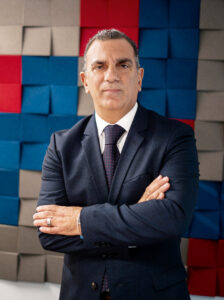The findings of several recent global reports on what people need when they return to the office indicate that things are different than initially expected. When we started discussing hybrid work, we all thought that people would come to the office to collaborate. Yet, when asked what they need most, people say it’s privacy for individual work.
 Data on what people want as they return to the office is mixed and confusing for a reason: People want both collaboration and privacy. On the one hand, they want face-to-face interaction with colleagues that’s so difficult to replicate through screens, and on the other, they also want a more private, individual work environment. Working from home for so long has helped people realize the importance of meeting face-to-face, socializing, brainstorming, and connecting with each other—the human connection and shared workplace experience that video calls could never quite replace. This interaction is how organizations build community, strengthen relationships, and reinforce shared purpose and culture
Data on what people want as they return to the office is mixed and confusing for a reason: People want both collaboration and privacy. On the one hand, they want face-to-face interaction with colleagues that’s so difficult to replicate through screens, and on the other, they also want a more private, individual work environment. Working from home for so long has helped people realize the importance of meeting face-to-face, socializing, brainstorming, and connecting with each other—the human connection and shared workplace experience that video calls could never quite replace. This interaction is how organizations build community, strengthen relationships, and reinforce shared purpose and culture
Yet an open-plan working environment is not always the best place to work, particularly now that many people take video calls throughout the day. Audio and visual distractions have increased dramatically over the past three years making focus and individual work extremely difficult. People want and need more personal spaces for focused work. When they can focus, they think and feel better. There are several ways to address the privacy problem and make it easier for people to find spaces where they can get work done:
Offer a variety of privacy options. Fully enclosed enclaves, pods, screens, or shelves can provide diverse ways for people to seek out the right level of privacy for the type of work they’re doing. Well-curated backgrounds can provide a professional look free of distraction for those on the other side of the meeting.
Whether sharing or calling it your own, height-adjustable desks are worth it. More people can use the same space comfortably if shared, and those with assigned desks who may sit longer can change postures and keep moving.
A range of seating is needed to support t different types of work. For shared spaces, chairs should respond to bodies of all shapes and sizes and require a few manual adjustments to get comfortable. People with assigned spaces will want a fully adjustable chair they can dial in to their exact preferences, that keeps them comfortable longer.
Provide optimal lighting for different kinds of hybrid work. A task light that is designed for on-video experiences highlights people’s faces and helps them control their appearance on camera and make up for ambient light. A table lamp with a shade that provides a soft glow also works well.
As organizations rethink their future workplace, they need to value space and the experience of being together more than ever, but first and foremost must also support getting work done. The new, hybrid office matters as a place to come together for both individual and team productivity. For employees, the right combination of privacy and working together as a team are top-of-mind priorities. With the longterm adoption of hybrid work and the transition back to the office, we have a great opportunity to rethink the physical office space and to create working environments where employees want to be and where they are supported to do their individual and collective best work.



